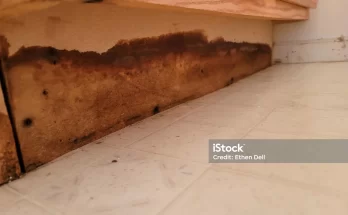As the mercury rises, so does the potential risk for certain health and property issues that can lurk unnoticed in our buildings and structures. One of these insidious problems is the increased likelihood of moisture build-up and subsequent mold growth. This blog post aims to shed light on the relationship between high temperatures, moisture, and mold, and how you can mitigate these risks.
Understanding the Trio: Heat, Moisture, and Mold
The relationship between heat, moisture, and mold is a bit like a sinister chain reaction. High temperatures can increase humidity levels, providing the ideal environment for mold growth. Let’s break down this process.
- High Temperatures and Humidity: Warm air can hold more moisture than cool air. As temperatures rise, so does the capacity of air to retain moisture, leading to higher humidity levels. When this humid air comes into contact with cooler surfaces, condensation occurs, causing moisture build-up.
- Moisture and Mold: Moisture is a key ingredient for mold growth. Mold spores, which are naturally present in the air, thrive and multiply quickly when they land on damp surfaces.
The Implications of Mold Growth: Mold isn’t just unsightly; it’s a potential health hazard and can cause structural damage over time. Exposure to mold can lead to allergic reactions and respiratory issues. On the property side, it can cause damage to walls, ceilings, furniture, and even compromise the structural integrity of the building over time.
Preventing Mold Growth in High Temperatures
Here’s what you can do to mitigate the risk of mold growth during periods of high temperature:
- Control Humidity Levels: Use dehumidifiers and air conditioners to keep indoor humidity below 60%, ideally between 30% and 50%. Regularly empty and clean these devices to prevent them from becoming mold sources themselves.
- Ensure Proper Ventilation: Ventilate kitchens, bathrooms, and other high-humidity areas. Use exhaust fans or open windows when cooking, washing dishes, or cleaning.
- Inspect and Maintain: Regularly check your property for leaks and address any immediately. Regular maintenance of HVAC systems can also help prevent moisture build-up.
- Professional Help: If you do discover mold, it’s essential to call in professionals. Mold remediation is a task best left to those who are trained to handle it safely and effectively.
Understanding the link between high temperatures, moisture, and mold is crucial for maintaining healthy indoor environments, especially during the hotter months. By staying aware, proactive, and ready to call in professional help when needed, we can safeguard our properties and our health from the hidden threat of mold.




